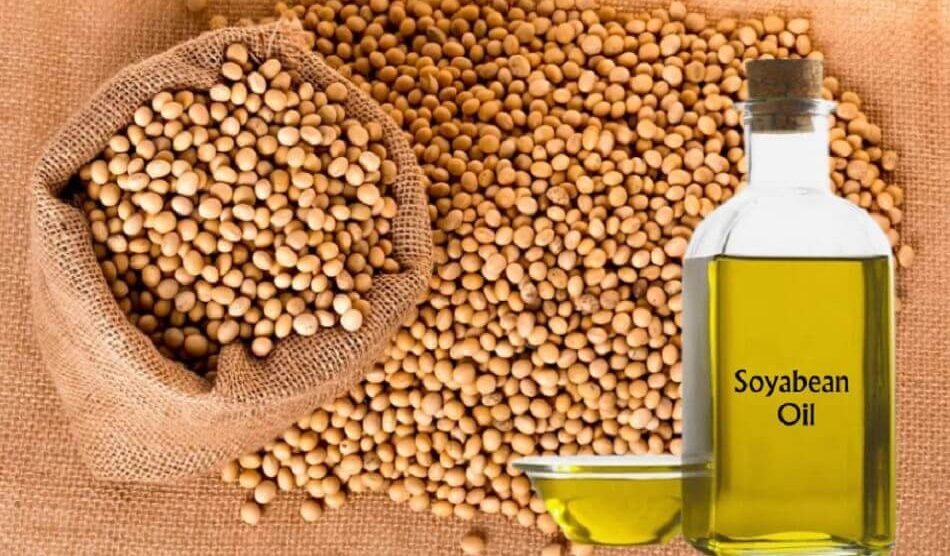With increasing demand from industrial customers, the premium for US soyabean oil climbed to $150/ton
Because of increasing demand expectations from industrial customers, the premium for US soyabean oil has climbed to almost $150 per tonne compared to South America, driving up costs.
According to the US Department of Agriculture (USDA), the premium has climbed from $20 per tonne in early April, while it is still lower than the $400 seen in June 2021. In addition, the premium averaged $270 per tonne from April to August of the previous year.
According to BV Mehta, Executive Director of the Solvent Extractors Association of India (SEA), the US quoted soyabean oil at $1,932 per tonne free-on-board over the weekend, while the Netherlands offered it at $1,876. Argentina’s offer was the most competitive, at $1,711, while Brazil’s was at $1,725.
Because India mostly imports soyabean oil from Argentina and Brazil, the premium is unlikely to have much effect. Also Read | SEA urged govt to remove soyabean oil from criteria for labeling it as ‘GM food’.
This year’s increase is 30%.
‘While food and feed use of all oils in the US is anticipated to expand less than 1% through the 2022-23 marketing year beginning September,’ the USDA’s Foreign Agriculture Service stated in its ‘Oilseeds: World Markets and Trade’ study.
Prices for soybean oil and fuel have risen dramatically this year. Soybean oil prices have risen by more than 30% in the United States and 20% in South America this month. Petroleum prices, on the other hand, have increased by 45 percent during the same time period, according to the report.
According to researchers, 40% of soyabean oil produced in the United States is used to produce biofuel, with corn (maize) accounting for the remaining 36%. The issue has gained prominence as a result of the Russia-Ukraine conflict, which has caused the prices of food commodities such as wheat, corn, oilseeds, and barley to skyrocket.
According to Mehta, over 50 million tonnes (mt) of the 240 mt of edible oils produced globally are used for bio-diesel, with further industrial applications.
‘Practically, more edible oil supplies are being diverted to gasoline.’ This includes crude palm oil in Indonesia, where the goal is to utilize 30% of production for biodiesel,’ he said.
Inefficiency in conversion
In the United States, increasing food costs and surging inflation have reignited the argument over food vs fuel, and whether wheat crops should be redirected for fuel.
According to the World Resources Institute, the conversion efficiency of food crops to fuel are poor, posing a threat to sustainable food futures.
‘Such low conversion efficiencies explain why it takes a large area of productive land to yield a tiny amount of bioenergy, and why bioenergy can so drastically increase global competition for land,’ it stated.
‘Rising price premiums for US soyabean oil reflect a stronger demand versus supply balance in the US versus Brazil and Argentina.’ The US domestic market is expected to take 93% of all soybean oil produced this year. When biodiesel exports are taken into account, this compared to 80% in Brazil and 13% in Argentina,’ according to the USDA.
domestic consumption
The United States is likewise a net importer of vegetable oil, with imports expected to account for a fifth of total domestic consumption. Its total domestic oil consumption is expected to be 9% higher in 2022-23 compared to the previous year. In contrast, domestic oil demand in Brazil is expected to fall beginning in 2020/21.
In the mid-2000s, rising energy prices became the key pricing driver for vegetable oils. Today, soaring vegetable oil costs indicate constrained supplies.
Droughts in Canada and South America, as well as events in Ukraine and trade restrictions in some nations, have limited accessible vegetable oil supply, according to the USDA.
Also Read | Soyabean crop output will be lower than the estimate of 13.83 million tonnes – SEA.
The role of biofuels in transportation
‘Every country’s policy is self-centered,’ SEA’s Mehta stated. According to the World Resources Institute, biofuels derived from food crops such as maize, vegetable oils, and sugarcane currently account for approximately 2.5 percent of the world’s transportation fuel.
It stated that if crop-based biofuels are phased out, the anticipated 70 percent calorie deficit in 2050 will be reduced to 60 percent, a huge step toward a more sustainable food future.


















Add Comment